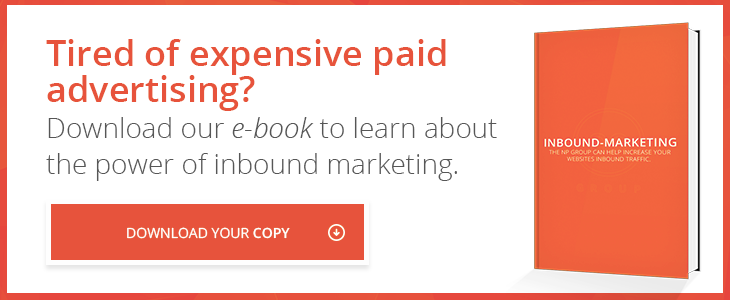So your website looks great, it’s running fast and smooth, and you’re regularly posting new content because that’s what all of the marketing guides tell you to do.
But is that content any good? More importantly—is it great?
There comes a certain point where good enough won’t cut it. As marketers, we have the phrase “content is king” permanently tattooed on our brains, but when faced with the need to meet deadlines and maintain a certain speed of creation, we run the risk of becoming robots churning out content simply because it’s an item on our to-do lists.
While the quality of any creative work is highly subjective, creating marketing content for prospective customers has more specific criteria for success.
You’re probably already aware of Google’s great, big, mysterious algorithm. It’s likely that you spend a lot of time crunching numbers and poring over your analytics, trying to figure out how to get yourself to the top of search results. But if you worry too much about SEO, you lose sight of who it’s all really supposed to be for: your prospective customers.
Maybe it's time you placed more emphasis on your content's quality. And when you do, you may be surprised to find that many of the problems of Google placement get solved. With Google using more criteria of quality over mechanics, you can see a clearer path ahead of what you need to do to make your content great rather than merely good.
Let's see what you can do to immediately place your content in the exceptional category so people turn to you with a level of trust.
Creating an Original Work
In order to be taken seriously, you have to create something original with proper spelling and grammar. If you aren't the best writer in the world, then pick someone in your team who is, yet has a level of expertise to write with authority. Failing that, hire someone.
Not only should your content be original, it needs to prove that you know what you're talking about. Never hesitate to turn to staff members who can at least brainstorm topics with you, provide a guest blog post, or create other content with proven knowledge of your industry.
And do not—I repeat, DO NOT—underestimate the importance of clean copy. It's been noted that 74% of all customers or buyers notice spelling and other grammar errors in marketing content. Out of those people, 59% wouldn't buy from a business with too many content errors.
Content for Targeted Customers
Targeting in content is essential now. Create content that is more personal and helps the reader fully relate to what they read or see. It's why it pays to find out what the pain points of your ideal customer are. Hone in on those problems in the content you create.
No matter if these problems get addressed in videos, infographics, or in blog posts, customers are going to relate to it if you make it personal and actionable. When you create a narrative in which they can see themselves, you bring that personal touch to a new level. This is a major 21st-century goal in both the B2C and B2B worlds for content marketing.
Make your content compellingly targeted and it will have a better chance of sticking the landing.
Branding Yourself in Your Content
By imbuing each piece of content with your own brand, you set a high mark for originality rather than creating content that could have been posted by anyone, anywhere. You can brand your content with original images, specific branding colors, or trademarked concepts and ideas.
This is an area where establishing a solid brand voice also helps. Particularly with written content, such as blog posts or social media, a little personality goes a long way. A good example of this that comes to mind is the writer Chuck Wendig, whose writing style is unmistakable thanks to its slap-you-in-the-face individuality.
Most importantly, incorporate your brand message into your content, which should always be positive. You want content that you know will compel a reader to take action. Yes, this means incorporating major calls to action that convey and reinforce your company message.
(See what we did there?)
Exceeding Expectations
Putting more work into your content ultimately pays off, even if your time is short. By making a valid point or backing up data in your content instead of just regurgitating platitudes found anywhere else, you go the extra mile to make content consumption worth every minute.
Even more important is leaving the reader with something they can use in their business or their personal life after reading. Always make your content have a point rather than just creating because you feel you have to. In the end, if you feel excited about what you’re creating, your audience will be excited about it too.



